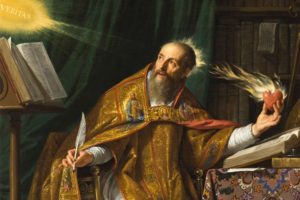A 108 foot tall statue featuring the face of England football manager Roy Hodgson now sands on the White Cliffs of Dover.
With an arm span of 96 feet, weighing eight tons, it is a response to “the plight of England fans who felt the national team would need divine intervention for success during this month’s European Championship.” It is hoped that the looming face of Roy the Redeemer will unsettle their French rivals in advance of England’s opening game on Monday. Looking southward from England, the statue is visible from France’s northern coast.
The stunning structure is a parody of the iconic Christ the Redeemer statue which overlooks Rio de Janeiro, but the face of Christ has been replaced by England’s new “savior.” Constructed by the online betting service, Paddy Power, the statue is intended to stimulate support among fans, and perhaps even garner some divine assistance, in this month’s European Football Championship. Spokesman Ken Robertson says, “Since Christ the Redeemer was constructed in Rio de Janeiro in 1931, Brazil has gone on to become the world’s leading footballing nations.”
Paddy Power desires the statue to serve as a “potent symbol of hope” at a time when expectations for a tournament triumph have descended to an all-time low. That is an interesting phrase, a “symbol of hope.”
Symbols of Hope
I observed something very similar in Italy. In the summer of 2006, I enjoyed an outdoor celebration when the Italian soccer team defeated Germany in double overtime during the closing moments of the semi-final World Cup game. After the blazing soccer ball reached the back of the German net, apartments throughout Italy exploded with cheer.
The final goal was replayed several times along with Pavarotti’s version of “Nessun dorma” from Puccini’s “Turandot.” With his three climactic “vinceros” at the end of the aria (translated “I shall win”), the ball rose, arched, and landed sweetly and safely in the corner of the net. The subsequent unleashing of euphoria defied description. Waving, cheering, and chanting resounded throughout the streets and into the cobblestone piazzas. The central fountain of the Piazza Campo dei Fiori (Field of Flowers) became a stage on which the most clamorous stood and chanted, “C’í non salta un Tedesco è!” – He who does not jump is a German! Soon everyone in the piazza was laughing, jumping, and singing.
As the evening festivity continued, the terraces around the piazza filled with spectators. From one such window emerged an elderly gentleman in his undershirt, enjoying a smoke. A few young men noticed the resemblance of this fellow to the late Fascist dictator Benito Mussolini. They shouted, “Look up, look up” and began calling to the second story window, “Il Duce, Il Duce” (Mussolini’s nickname translated “the Leader”). Soon others were allured by this phenomenon. The old man played the part with delight. Initially, I thought he was a professional actor since he performed so well; then I realized he was simply Italian. Others quickly joined in and soon the entire piazza was looking to the same window where the old man with the prominent hooked nose and protruding chin enjoyed his moment of fame. The crowd continued to chant, “Duce, Duce, Duce!” as the Benito look-alike waved and blew kisses to his adoring fans.
We Are All Searching
Among the insights I gleaned from the Roman piazza is the fundamental need of humanity to lift its gaze upward in hope of finding a Savior. It is inescapable. God has created us for himself; men and women cannot function otherwise. In the words of Psalm 121:1, “I lift up my eyes to the hills. From where does my help come? My help comes from the Lord, who made heaven and earth.”
Unfortunately, we humans don’t always look in the right direction. The light shines into the darkness and the darkness does not comprehend it, which is our legacy apart from the illumination of God’s Spirit.
While the statue of Roy Hodgson is a parody; it is also a vivid reminder of what humanity craves. And when we talk with friends over the fence or at summer barbeques, this is precisely the existential need that we can help them to discover. Honest and humble questions concerning the object(s) of their hope have potential to shine redemptive light into the darkness. And hopefully, by God’s grace, we will help others to discover the Savior, not on the Cliffs of Dover or Rio de Janeiro, but in the face of Jesus Christ.





